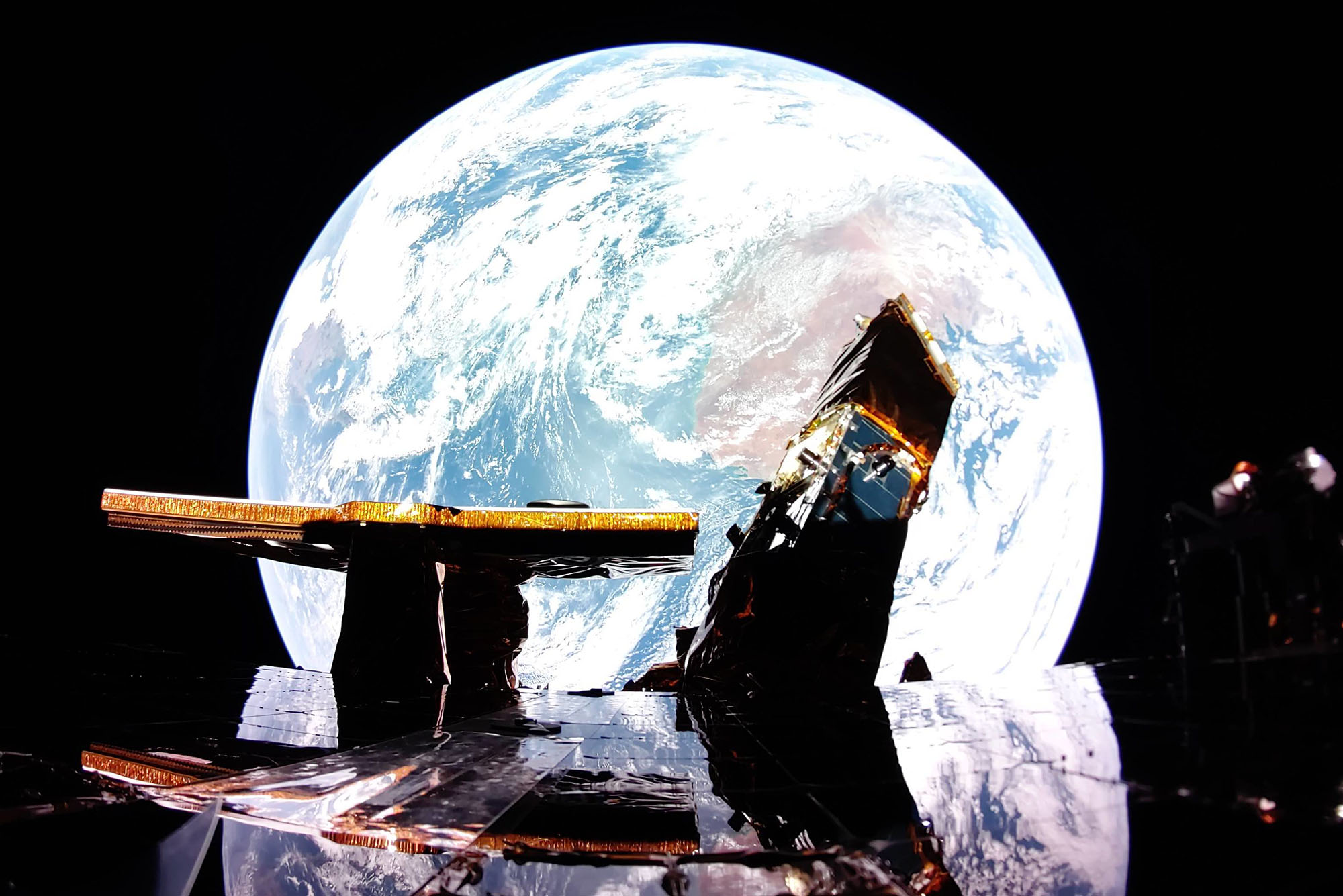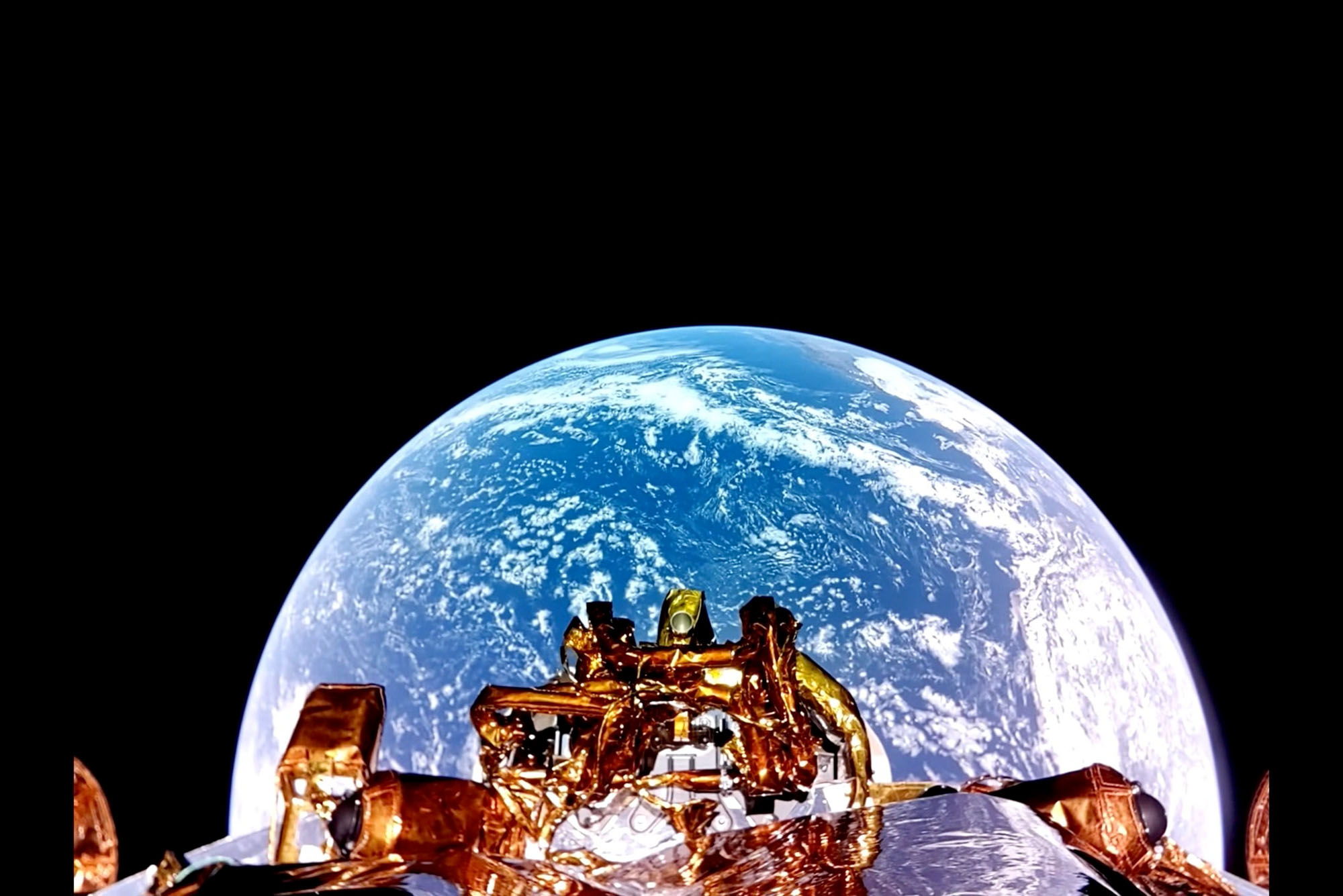Spacecraft Carrying BU Telescope to the Moon Captures Breathtaking Images of Earth

The BU-developed LEXI telescope juts out from the top right of the Blue Ghost craft as an image of the Earth reflects off the lunar lander’s solar panel.
Spacecraft Carrying BU Telescope to the Moon Captures Breathtaking Images of Earth
NASA’s Blue Ghost mission has finished orbiting Earth and is on its way to the moon
After cruising around Earth for just over three weeks, a Boston University–developed telescope is en route to the moon.

The Lunar Environment heliospheric X-ray Imager (LEXI) is hitching a ride on NASA’s Blue Ghost Mission 1 spacecraft, which blasted off on January 15, and is on schedule to land on the moon in early March.
“The spacecraft and LEXI continue to behave well in space,” says Brian Walsh, a BU College of Engineering associate professor of mechanical engineering. He led the team that created the telescope. “LEXI has operated for more than 40 hours at this point.” Blue Ghost is scheduled to enter lunar orbit in a few days, followed by an early morning landing on March 2.
Although its main mission—advancing lunar research and space science—is yet to come, the spacecraft, which was designed by private company Firefly Aerospace and commissioned by NASA, has already captured stunning images of Earth and the moon.
In the video above, LEXI can be seen affixed atop of the moon lander; the long rectangular instrument houses the telescope’s electronics and computing systems, as well as optical lenses that can pick up even the faintest X-ray signals. (The video was captured in late January as the Blue Ghost orbited Earth, our home planet eclipsing the moon—that tiny dot in the distance.) From the vantage point of the moon, LEXI will capture a huge swath of Earth’s space environment that has never been imaged before, including X-rays released when particles emanating from the sun collide with atoms floating around our outermost atmosphere.

When the Blue Ghost lunar lander arrives at its destination, all 10 payloads, including LEXI, will operate for two weeks straight. The BU team is prepared to monitor and receive the data collected from LEXI, which they hope will bring fresh insights on the boundary between Earth’s magnetic shield and the sun’s solar wind energy.

The Brink will continue to follow LEXI on its journey through space. Follow BU on social media and check back on The Brink for more exciting updates. To learn more about the years of NASA-supported work that went into creating LEXI and the science it will perform on the moon—and to watch videos of its launch into space—check out our previous stories.


Comments & Discussion
Boston University moderates comments to facilitate an informed, substantive, civil conversation. Abusive, profane, self-promotional, misleading, incoherent or off-topic comments will be rejected. Moderators are staffed during regular business hours (EST) and can only accept comments written in English. Statistics or facts must include a citation or a link to the citation.